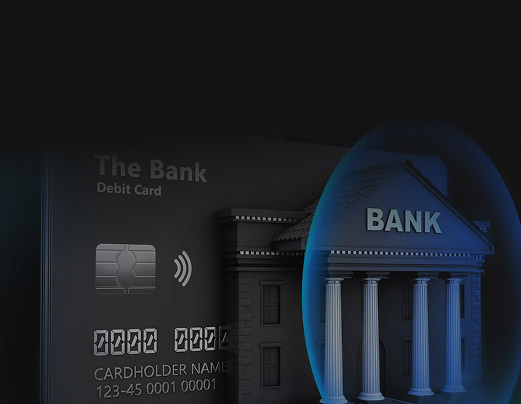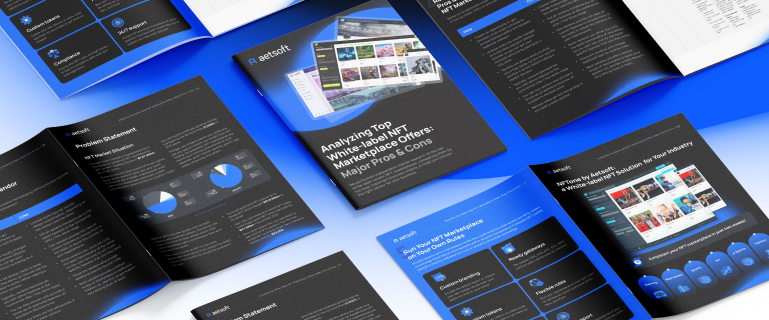I used to pay by cash. Then came plastic cards, and now my card sits in my phone. What is the next step?
What if you could walk into a store, grab a coffee, walk out… and not get tackled by security?
That is the promise of biometric payment. You don’t need anything to pay: no card, no phone, no PIN. Simply look at the camera and you’re done.
Let’s find out if biometric payment is the future.
First, what is a biometric payment?
Some biometric payments are already common
When you picked up this device, did you type your password? There’s a good chance, you didn’t. Almost any modern device already supports face or fingerprint recognition.
So when you pay with a phone, you don’t have to type your pin. You only need to look at it’s camera or press a finger.
That’s called device-gated biometric payment. Your Face ID authenticates you to your phone, but it doesn’t complete a transaction by itself. Your payment gateway does not receive your biometrics. Everything happens within your phone, and you still have to carry it around.
Pay-By-You methods are coming
Merchant-side biometric payments are authorized with only your unique traits. Instead of proving something you know (a PIN) or something you have (a card), the system checks something you are. And you have many unique traits:
- Fingerprint. Relies on capacitive or optical sensors
- Face. Uses camera plus liveness detection
- Iris. Requires high‑accuracy, niche hardware
- Vein patterns. Uses palm or finger vein scanners
- Voice. Useful in call centers, less common at POS
- Behavioral. Checks for things like keystroke rhythm or gait. More popular for risk scoring than hard auth
In each case, your biometric sample is matched to a template stored by the merchant/PSP (or their vendor), then triggers the payment instrument on file. So the biometric check happens in the merchant’s flow, not just on a personal device.
How biometric payments work under the hood
The exact flow depends on the channel (mobile, kiosk, POS, web) and your identity provider, but the building blocks are the same.
Enrollment
First, the system needs a template of someone’s biometrics.
I have to say, most systems don’t store raw images of your face or finger. They store a template—a math representation extracted from the image—so the system can compare future readings to that template. Here’s how it works:
- Capture biometric data (e.g., scan a face on a phone or at a kiosk).
- Process it on device or server to create a template.
- Bind that template to a user profile and one or more payment instruments (card token, bank account, wallet).
Payment
The point of a biometric payment is to match the biometric template with the scan at checkout — and see if this is the same person. Let’s break it down:
- Capture. At checkout, the sensor grabs a fresh sample.
- Liveness. Software will check if that’s really you looking at the camera, not a scammer with your photo from Instagram. To do that, the app can ask you to look sideways and blink. Or it can be more subtle and analyze your micro‑movements
- Match. The biometric payment system will compare the sample to the template. It calculates the similarity score and, if it’s high enough, you pass at being yourself.
- Authorize. The system already knows it’s you, but it has to check your account, spending limits, and risk flags. If all looks good, the payment is done.
Where the data lives
When you build a biometric payment system, you first need to choose where to keep templates. There are several options:
- On‑device: the phone’s secure enclave keeps templates local; the merchant never sees them. This is the best fit if you want low integration overhead, strong privacy guarantees, and you’re happy to rely on Apple/Google’s ecosystem. Great for mobile‑first flows and where users already have compatible devices.
- On‑prem or cloud: for in‑store or multi‑device use, templates sit in a secure server, often tokenized and split across services. This is what you need when you want to prioritize speed and repeat customers. That could be grocery stores, gyms, or stadiums. It comes with higher operational responsibility (consent, deletion, uptime, audits) but gives you full control and brand ownership of the biometric experience.
Will biometric payments replace all the other methods?
No, because each payment method has its own use. Cash is still around, and cards are likely to stay as well. Especially the ones in your phone, authorized by biometrics.
Advantages of biometric payment
First, the system needs a template of someone’s biometrics.
I have to say, most systems don’t store raw images of your face or finger. They store a template—a math representation extracted from the image—so the system can compare future readings to that template. Here’s how it works:
- Speed for customers, conversions for businesses. One glance or touch, then go. Get shorter queues, fewer abandoned checkouts. Around 75% of checkouts globally are abandoned. So the simpler you payment process, the higher the conversion rate. Amazon applies that ide to brick and mortar stores, when they introduced Pay-by-wave in Whole Foods.
- Stronger assurance. A stolen card can’t copy your face. Combined with liveness, it’s hard to spoof at scale.
- Accessibility. Helpful for users who struggle with PINs or cards.
- Auditability. Match scores and event logs help risk teams investigate incidents.
When to pause
- Low ticket sizes where tap‑to‑pay is already instant. Biometrics may be overkill, unless you’re bundling it with loyalty or fraud protection. Otherwise the time saved is marginal.
- Privacy‑sensitive contexts without clear consent flows. If customers worry about surveillance or lack of control over their data, adoption will stall. In such cases, stick to device authentication.
- Spotty hardware environments. If you have old POS parks, poor lighting, or dirty sensors, that will hurt match rates and frustrate staff. So when you upgrade a payment method, you might need to upgrade cameras as well. Also, keeping sensors clean sounds is the difference between a 95% match rate and a queue of angry shoppers.
The risks you need to plan for
No system is completely airtight, though most issues are solvable with policy and engineering discipline. Here’s what you need to consider:
Advantages of biometric payment
- Privacy and consent. You must collect clear, informed consent and explain what’s stored, where, and for how long. Users should be able to revoke consent and delete templates. Put the policy in plain language near the enrollment point. Don’t bury it.
- Irreversibility. Passwords can be reset. Faces cannot. If a template leaks, you can’t issue a new finger. So reduce blast radius: store templates in HSM‑backed systems, use template protection schemes, and minimize who can touch them.
- False accepts and rejects
- FAR (false accept rate): impostor gets in. Bad for fraud, you don’t want people abusing the system.
- FRR (false reject rate): real user denied. Bad for UX and conversions. Tuning is a trade‑off. For payments, you usually keep FAR extremely low, but not zero. Marginal FAR is still better than abandoned checkouts in brick and mortar stores.
- Spoofing with photos, masks, and replays. Liveness detection and multi‑sensor capture (e.g., RGB + IR + depth) make basic spoofs fail. But keep your models updated, because attackers certainly do.
- Regulation and standards. Depending on your market, you’ll need to align with payment security frameworks and data protection laws (think strong customer authentication rules and data minimization). Store only what’s necessary, for as short as possible.
- Social acceptance. Face payments can feel creepy if the value isn’t obvious. So include clear signage, opt‑in enrollment, and a visible fallback to calm nerves.
Current adoption and real‑world use cases
Biometrics show up in four main patterns. Each one has different risk and hardware needs—and yes, there are live deployments you can learn from.
Phone‑as‑token, biometric‑as‑gate
As we already discussed, users pay with Apple Pay or Google Pay biometrics verify the user (that’s called CDCVM, or Consumer Device Cardholder Verification Method). Merchants never see the biometric, they receive a tokenized card transaction.
- Where it fits: e‑commerce, in‑app payments, any NFC tap in stores. Works everywhere you already accept contactless.
- Why teams like it: low integration effort, strong security anchored in consumer devices you don’t manage. Support and setup are well‑documented by Apple and Google.
In‑store biometric checkout
Cameras or fingerprint/palm scanners at the POS match the shopper to an enrolled profile with a stored payment method.
Fits everywhere where there’s huge traffic and repeat customers: gyms, campuses, fast food joints, high‑frequency retail, stadiums, public transport, and the list goes on.
Watch‑out for strong liveness, good lighting, clear consent flows, and sub‑second matching at the edge.
Here are some examples:
- Amazon One. Running authentication by palm at Whole Foods and venues.
- Mastercard Biometric Checkout Program. Accepts the customer’s face or palm. Pilots began in Brazing and are already expanding in Europe.
- PopID / PopPay. Deployed across restaurants and campus retail in Southern California. Users can pay by face.
- Alipay “Smile‑to‑Pay” / WeChat Pay “Frog Pro” (face) — hardware terminals for cashier lanes in China; Alipay commercial launch and WeChat Frog Pro details.
ATM and branch experiences
Banks have rolled out facial‑recognition ATMs and finger‑vein readers for cardless withdrawal.
For customers, it reads as safety plus convenience: there’s no card to skim, less time at the machine.
For branches, it shaves minutes off assisted service and makes identity checks feel less theatrical. It’s not for every market, but in places with heavy cash usage or fraud concerns, it lands well.
The banks who roll out biometric payments:
- CaixaBank (Spain). Facial‑recognition ATMs validate thousands of facial points to allow cardless cash withdrawals.
- İşbank (Turkey). Large‑scale finger‑vein ATMs across branches and machines.
Remote identity + payment linking
Fintechs and exchanges lean on selfie + ID checks during onboarding, then reuse the same face (with liveness) to gate payouts, big transfers, or account changes.
From a user’s point of view: the first time takes a minute; after that, high‑risk actions feel fast but serious.
From a risk team’s point of view: it’s measurable. You get match scores, liveness outcomes, device history, and velocity in one story.
Face match plus an ID document check at sign‑up. Later, the same face (or selfie liveness) can gate payouts, high‑value transfers, or withdrawals.
Examples:
Wise
Selfie + ID verification for onboarding and higher limits.
Revolut
Selfie checks used during security reviews and wealth‑protection flows.
Web3 adoption
As the Web3 world matures, all the benefits of biometric payments carry over. Users want quicker sign-ins, fewer forgotten keys, and enhanced security. Here’s what Aetsoft brings to Web3 companies:
Self-custody and MPC wallets (think mainstream mobile wallets) allow gate signing with device biometrics or passkeys. For most users, there’s no need to store keys or recovery phrases. Your face is enough to access the wallet.
Custodial brand wallets at events and campuses pair face/palm recognition with stablecoin settlement. Customers enroll once, then pay hands-free during the event. Operations get instant reconciliation and spending caps.
On-chain biometric checkout works exactly like offchain: a passkey prompt, a quick liveness check if risk is high, then a signed transaction. Merchants don’t manage templates with user faces, just receipts of transactions.
Identity-aware payments combine verifiable credentials with a biometric gate. You get age-gating or ticket ownership checks without handling raw documents at POS.
KYC tie‑ins matter here too. Many Web3 platforms already combine biometric checks with ID verification during onboarding, then reuse that assurance for later payments. It means fewer repeated uploads of passports and less friction when compliance teams need to know who’s behind the wallet.







